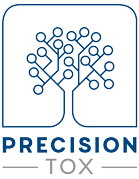Replace traditional animal testing with an evolutionarily diverse suite of biomedical model organisms from multiple branches of the tree of life.
Towards Precision Toxicology
A new scientific approach
The EU aims to promote alternative methods to animal testing. EU-funded PrecisionTox proposes ‘precision toxicology’, a novel scientific approach establishing causation between chemicals and their adverse health effects. The project focuses on human cell lines and a diverse suite of biomedical model organisms, i.e. fruit flies, water fleas, round worms and embryos of zebrafish and frogs, which share many genes with humans by evolution. These 3Rs compliant, cost-effective testing models enable the mapping of origins of toxicity pathways on the branches of the animal evolutionary tree to predict health risks to humans. By providing data where the toxicity of substances is unknown, PrecisionTox will ultimately translate into regulatory and industrial practices that better protect human health and the environment.

learn more
Pillars of the project

Phylotoxicology

Variation in
Susceptibility
Determine safe levels of exposure to chemicals based on genetic variation.

Embedded
Translation
Collaborate with regulators and other key stakeholders in project planning, selection of chemicals for investigation, and case studies for applying Precision Toxicology in policy and law.


